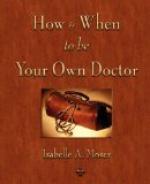Gerontologists refer to combating the aging process as “squaring the curve.” We arrive at the peak of our physical function at about age eighteen. How high that peak level is depends on a person’s genetic endowment, the quality of the start they received through their mother’s nutritional reserves, and the quality of their childhood nutrition and life experience. From that peak our function begins to drop. The rate of drop is not uniform, but is a cascade where each bit of deterioration creates more deterioration, accelerating the rate of deterioration. If various aging experiences were graphed, they would make curves like those on the chart on this page.
Because deterioration starts out so slowly, people usually do not begin to notice there has been any decline until they reach their late 30s. A few fortunate ones don’t notice it until their 40s. A few (usually) dishonest ones claim no losses into their 50s but they are almost inevitably lying, either to you or to themselves, or both. Though it might be wisest to begin combating the aging process at age 19, practically speaking, no one is going to start spending substantial money on food supplements until they actually notice significant lost function. For non-athletes this point usually comes when function has dropped to about 90 percent of what it was in our youth. If they’re lucky what people usually notice with the beginnings of middle age is an increasing inability for their bodies to tolerate insults such as a night on the town or a big meal. Or they may begin to get colds that just won’t seem to go away. Or they may begin coming home after work so tired that they can hardly stay awake and begin falling asleep in their Lazy Boy recliner in front of the TV even before prime time. If they’re not so lucky they’ll begin suffering the initial twinges of a non-life-threatening chronic condition like arthritis.
The thinnest line demonstrates the worst possible life from a purely physical point of view, where a person started out life with significantly lowered function, lost quite a bit more and then hung on to life for many years without the mercy of death.
If one can postpone the deterioration of aging, they extend and hopefully square the curve (retard loss of function until later and then have the loss occur more rapidly). Someone whose lifetime function resembled a “square curve"(the thickest, topmost line) would experience little or no deterioration until the very end and then would lose function precipitously. At this point we do not know how to eliminate the deterioration but we do know how to slow it down, living longer and feeling better, at least to a point close to the very end.




